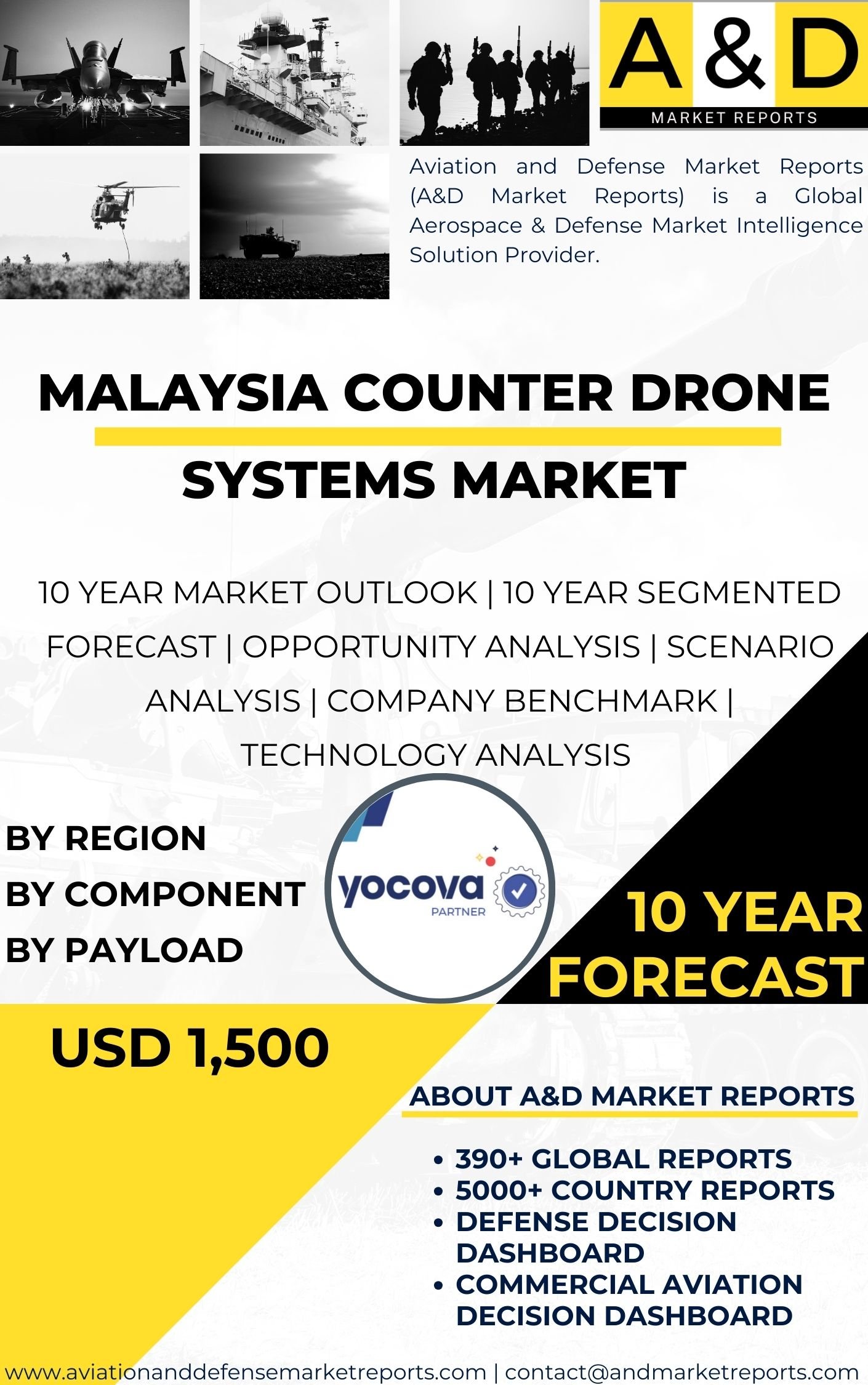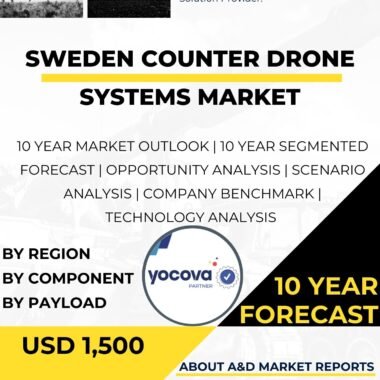Description
The counter-drone systems market in Malaysia has emerged as a critical aspect of the country’s efforts to address the growing threat of drones and unmanned aerial vehicles (UAVs) in various security domains. As a nation with strategic importance in Southeast Asia, Malaysia recognizes the need to protect its airspace, critical infrastructure, and public events from potential drone-related risks. The counter-drone systems market encompasses a wide range of technologies, solutions, and measures designed to detect, identify, track, and mitigate unauthorized or malicious drone activities.
The rapid proliferation of drones has led to an increase in their misuse, including incidents of illegal surveillance, smuggling, and security breaches. As a result, Malaysia has focused on bolstering its counter-drone capabilities to ensure public safety, protect national security, and safeguard critical assets.
One of the primary objectives of the counter-drone systems market in Malaysia is to enhance airspace security and protect sensitive locations. Counter-drone systems provide real-time detection of drones in restricted airspace, allowing authorities to respond promptly to potential threats. By employing radar, radio frequency (RF) sensors, and other technologies, these systems identify drones operating in unauthorized zones.
The acquisition and integration of counter-drone systems are part of Malaysia’s broader security modernization efforts. Collaborations with international defense companies and technology providers have facilitated access to advanced counter-drone technologies and expertise. These partnerships have also allowed for technology transfer and knowledge exchange, contributing to the growth of the domestic defense industry.
Moreover, Malaysia has also demonstrated interest in developing indigenous counter-drone capabilities. Collaborations between local defense companies and foreign manufacturers have facilitated technology transfer and knowledge exchange, fostering the growth of the domestic defense industry and contributing to economic development.
In addition to their application in airspace security, counter-drone systems play a significant role in protecting critical infrastructure and public events. Airports, power plants, government buildings, and stadiums can be vulnerable to drone threats. Counter-drone technologies such as jammers, net systems, and kinetic solutions offer the ability to neutralize or mitigate unauthorized drone activities.
The counter-drone systems market in Malaysia also extends to civil applications, including public safety, emergency response, and disaster management. Drones can be used to support search and rescue operations, monitor natural disasters, and assess the extent of damage. However, unauthorized drones in disaster zones can hinder rescue efforts, and counter-drone systems provide a means to mitigate these risks effectively.
Training and education are crucial aspects of the counter-drone systems market in Malaysia. Proper training of security personnel ensures that they are proficient in using counter-drone technologies and protocols. Regular training exercises contribute to enhancing the effectiveness of counter-drone operations and response capabilities.
Challenges in the Malaysian counter-drone systems market include the dynamic nature of drone technology, regulatory considerations, and the need for effective inter-agency coordination. The rapid advancement of drone technology requires continuous research and development efforts to stay ahead of emerging threats and adapt counter-drone measures accordingly.
Regulatory considerations are essential in the counter-drone systems market. Ensuring that counter-drone technologies comply with local and international regulations is crucial to avoid legal issues and protect the rights of drone operators who are flying responsibly.
Additionally, effective inter-agency coordination is essential to ensure a cohesive and integrated approach to counter-drone efforts. Close cooperation between various government agencies, law enforcement, and the military is necessary to maximize the effectiveness of counter-drone measures and minimize redundancies.
The counter-drone systems market in Malaysia is also influenced by international norms and agreements related to drone technology and usage. Malaysia adheres to international regulations and guidelines, ensuring responsible use and deployment of counter-drone technologies in accordance with international norms.
In conclusion, the counter-drone systems market in Malaysia plays a critical role in the country’s security modernization efforts and protection of critical assets. The adoption of advanced counter-drone technologies enhances airspace security, protects critical infrastructure, and ensures public safety. Collaborations with international partners and indigenous research and development efforts contribute to Malaysia’s strategic capabilities and the growth of the domestic defense industry. The government’s commitment to counter-drone capabilities demonstrates Malaysia’s dedication to safeguarding its airspace, critical assets, and public events from potential drone-related risks. Additionally, the versatility of counter-drone systems extends beyond defense applications to support disaster management, public safety, and emergency response, contributing to national security and public well-being.




